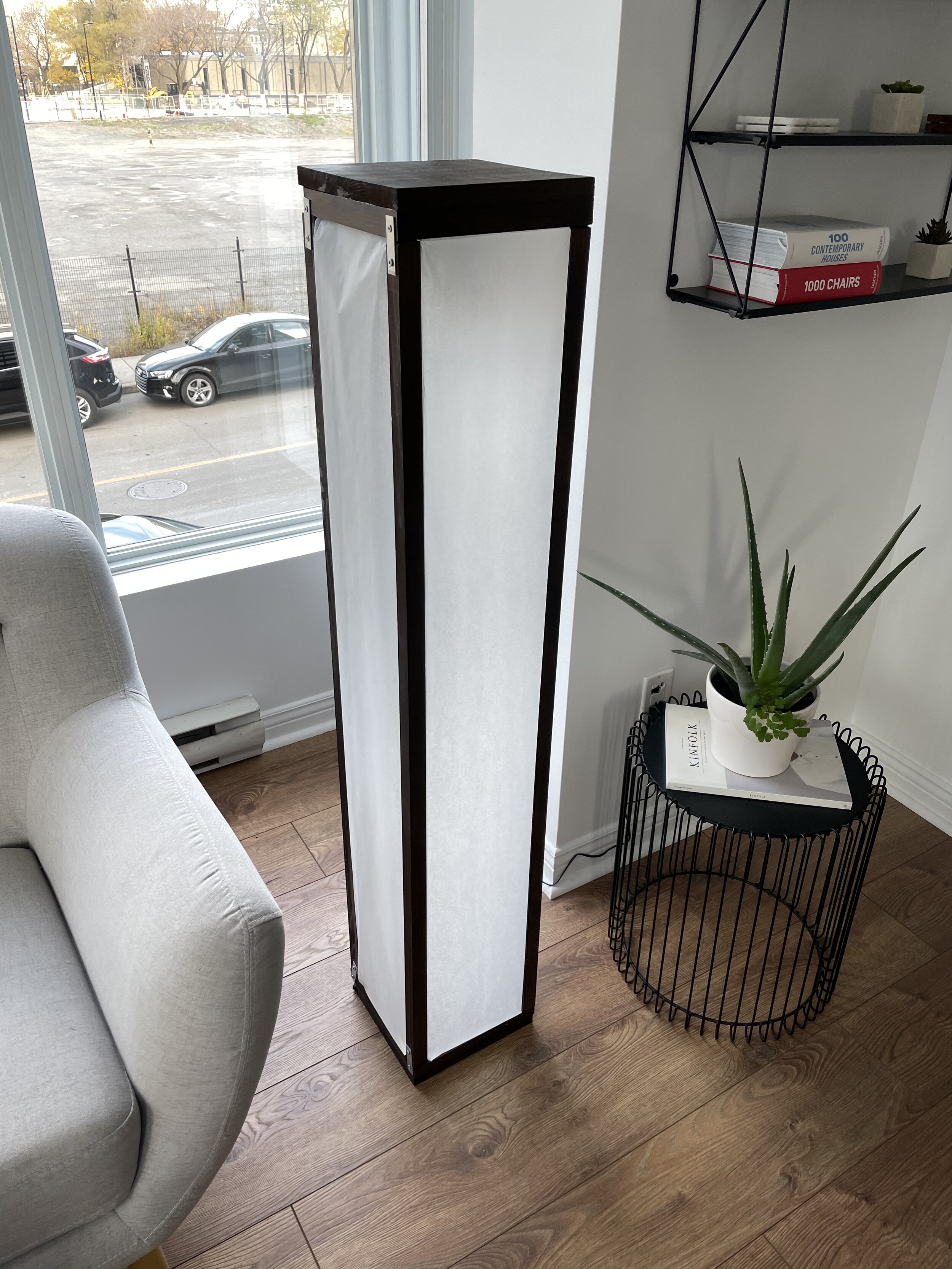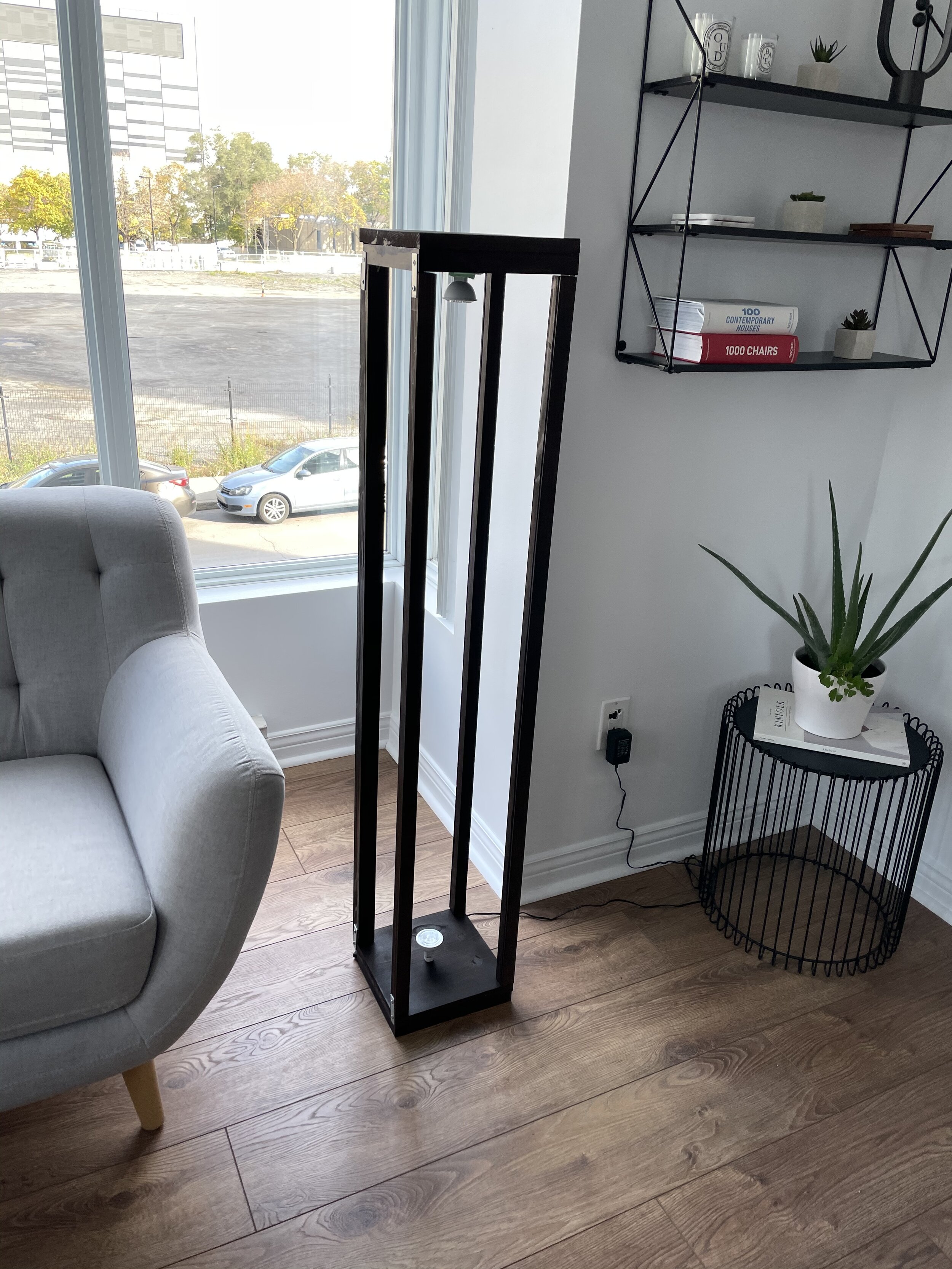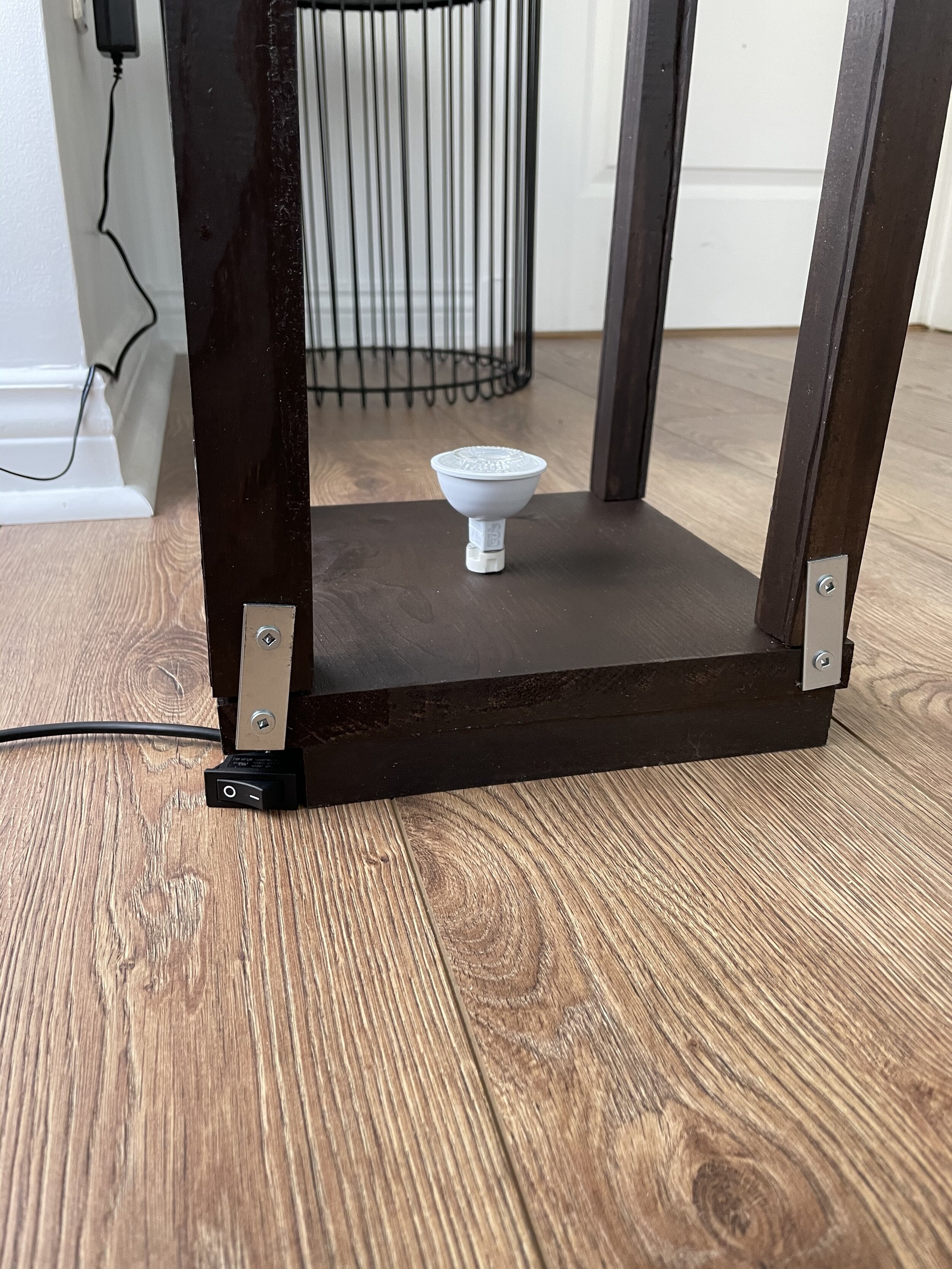Lamp
This project was realized in Fall 2020 as part of the Future Life of Objects course.
Project Description
Designing a lamp for a client : While working as a designer, you will be asked to design a product for a client just like an architect designs a house for a family or for an enterprise (apartment building, office space, store, etc.).
Your client is a young couple that just moved in a new house designed by an architecture studio famous for its sustainable approach and constructions. The couple hires your team to design custom lighting for their home and of course they are looking for sustainable concepts that will correspond to the ecological architecture they cherish. They are particularly interested in local production and natural, non-toxic and biodegradable materials.
For this project, you are asked to develop concepts that you will present to your client and then fabricate the functional prototypes that will answer the specific needs of this client. Your studio’s policy is to keep the ownership of each design that you create in order to eventually sell the concepts on your web site. As you recently invested in a 3D printer, you will use this technology whether to print small parts that will facilitate the assembly of your lamps or as creative elements or details to complement the design.
The project is to design lighting devices or system that are both innovative and sustainable i.e. minimal impact on the environment, from the birth to the end of life – integrating the principles of a circular economy – from cradle to cradle. Other objectives are to explore innovative technologies (3D printing, leds, sensors), use recuperated materials and parts + with natural materials. The design team is free to define the type of lamp they wish to design for their clients (table lamp, floor lamp, wall lamp, suspension) although they should form a coherent line of products. The prototypes should be functional and ready for “market”; this means you need to plan a strategy for packaging and transport. You also need to develop a communication strategy showing its integration in a circular economy to inform the client about the sustainable dimensions behind your concept (for repair, disassembly, re-use, recycling, biodegradable elements), through visual materials that accompany your design – this is the second part of this project.
Here are additional criteria that you need to follow:
-light source: has to be of low voltage, using minimal amount of energy, or no energy at all (solar, human powered) -materials: avoid buying new materials for this project – except for the light source and electrical/electronic
components;
-fabrication: it is required that at least one element of your lamp integrates a part made in 3D printing, favour the use of
PLA as it is a biodegradable resin;




The Assembly Guide





